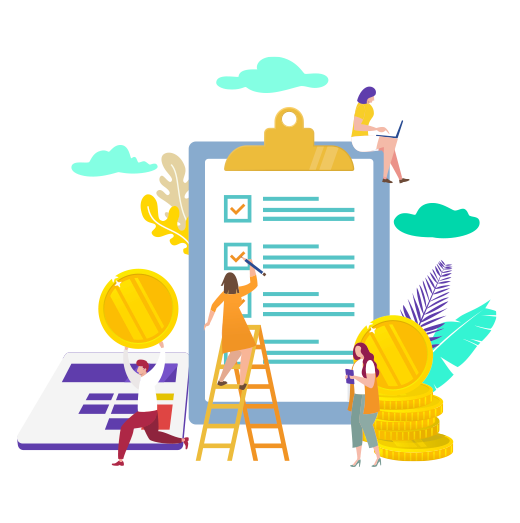
- Home
- Global Payroll
- Change Management During Payroll Transition: Impact on Internal Teams
Change Management During Payroll Transition: Impact on Internal Teams
Published :

Navigating a payroll system or vendor change requires careful consideration of its impact on internal teams, apart from employees as discussed in the first article of the series. While prioritizing employee experience is necessary, a successful transition also hinges on effectively managing changes within HR, finance, and IT departments. These departments play crucial roles in ensuring a smooth transition and maximizing the benefits of the new payroll software.
In this blog, we will delve into the specific responsibilities and challenges faced by HR, finance, and IT teams during a payroll transition. Change management must understand these factors and prepare and implement strategies to minimize disruptions and optimize the overall process.
The internal teams impacted by change in the payroll system or vendor and the role of change management are discussed below:
When there is a payroll software change, the payroll calendar changes meaning the HR department giving payroll inputs may have to change to a different timeline or SLA. For example, the payroll inputs that were given on the 15th of the month can now be given on the 18th due to an improvement in the payroll process. Similarly, HR departments receive different documents from the payroll professionals like the head-count report, etc. The new payroll software can have different SLAs and a new format for all these reports. Also, while the old system has lots of manual work, the new process may have several integrations in place. So, the change management must educate the HR department about different dates related to payroll input cut-off, deductions, benefits enrolment, etc, as uploading information in the system beyond these dates will have implications. The change management’s efforts to offer timely updates to the HR department help ensure a smooth transition and a happier workforce.
The finance team relies heavily on the General Ledger (GL) file provided by payroll. This file is crucial for accurate financial reporting, expense tracking, etc. It integrates payroll data into financial accounts, ensuring precise records of salaries and deductions. A payroll system or vendor change can significantly impact GL files due to variations in data format and structure. It can potentially cause data mapping issues, errors, or disruptions to reconciliation processes. Effective change management is crucial to mitigate these risks. It can involve the finance department in the parallel testing phase to review and validate the GL file formats from the new payroll system. This proactive step can help identify and address potential compatibility issues before going live, reducing the risk of disruptions, ensuring a smoother transition, and maintaining the integrity of financial records.
A payroll software change significantly impacts IT, requiring the team to ensure seamless integration with existing company systems, which may involve developing custom APIs and mapping data. The system/vendor change may impact security, requiring the IT team to assess and implement robust security protocols, including data encryption and access controls. Firewall configurations may also need an update to allow secure access to the new Employee Self-Service (ESS) portal. After the change, comprehensive testing is essential to verify system performance and security. Additionally, the IT team must support Single Sign-On (SSO) integration, ensuring compatibility with the organization’s identity management systems and troubleshooting any issues that arise during and after the transition. Change management is essential to coordinate these IT activities, manage expectations, and minimize downtime. Best practices include involving the IT teams early in the project's design architecture phase and conducting joint testing with the team before the go-live. This can help identify and resolve any technical issues, ensuring employees can access the new portal without complications.
According to a survey by Gartner, engaging in a two-way conversation all through the process of change management increases success by 32%. When the impact of change on employees, HR, finance, and IT teams are managed efficiently, they feel included in the process, respond positively, and even show eagerness to learn new skills, as and when required. Thus, by anticipating issues such as changes in reporting timelines, involving teams in various phases of implementation, and providing comprehensive support, change management can help create a difference.
Enterprise asset management (EAM) involves the management of mission critical assets of an organization throughout each asset's lifecycle. EAM is used to plan, optimize, execute, and track the needed maintenance activities with the associated priorities, skills, materials, tools, and information. The aim is to optimize the quality and utilization of assets throughout their lifecycle, increase productive uptime and reduce operational costs.
Enterprise asset management (EAM) involves the management of the maintenance of physical assets of an organization throughout each asset's lifecycle. EAM is used to plan, optimize, execute, and track the needed maintenance activities with the associated priorities, skills, materials, tools, and information.
The software helps in effective maintenance of assets through preventive, predictive, shutdown and breakdown maintenance strategies. The system also helps enterprises mitigate equipment risks by enhanced safety standards. The streamlined operations and improved asset performance helps organizations increase their investment effectiveness.
EAM is important because it helps organizations track, assess, manage and optimize asset quality and reliability. Asset intensive Organizations have hundreds, thousands, even millions of assets which needs to be maintained to maximize / optimize life of these assets to increase the return on investment.
The key features of effective EAM are:
Asset Intensive companies under the following Industries :
Contact us for a meeting and schedule a demo
This differs on case to case basis, based on the type of installation and unique industry specific requirements. Contact us for a meeting and schedule a demo.
This differs on case to case basis, based on the type of installation and unique industry specific requirements. Contact us for a meeting and schedule a demo.
Stay Connected, follow us on LinkedIn / Twitter to know more about EAM Software latest trends.

All Rights Reserved. © Copyright 2024. Ramco Systems.